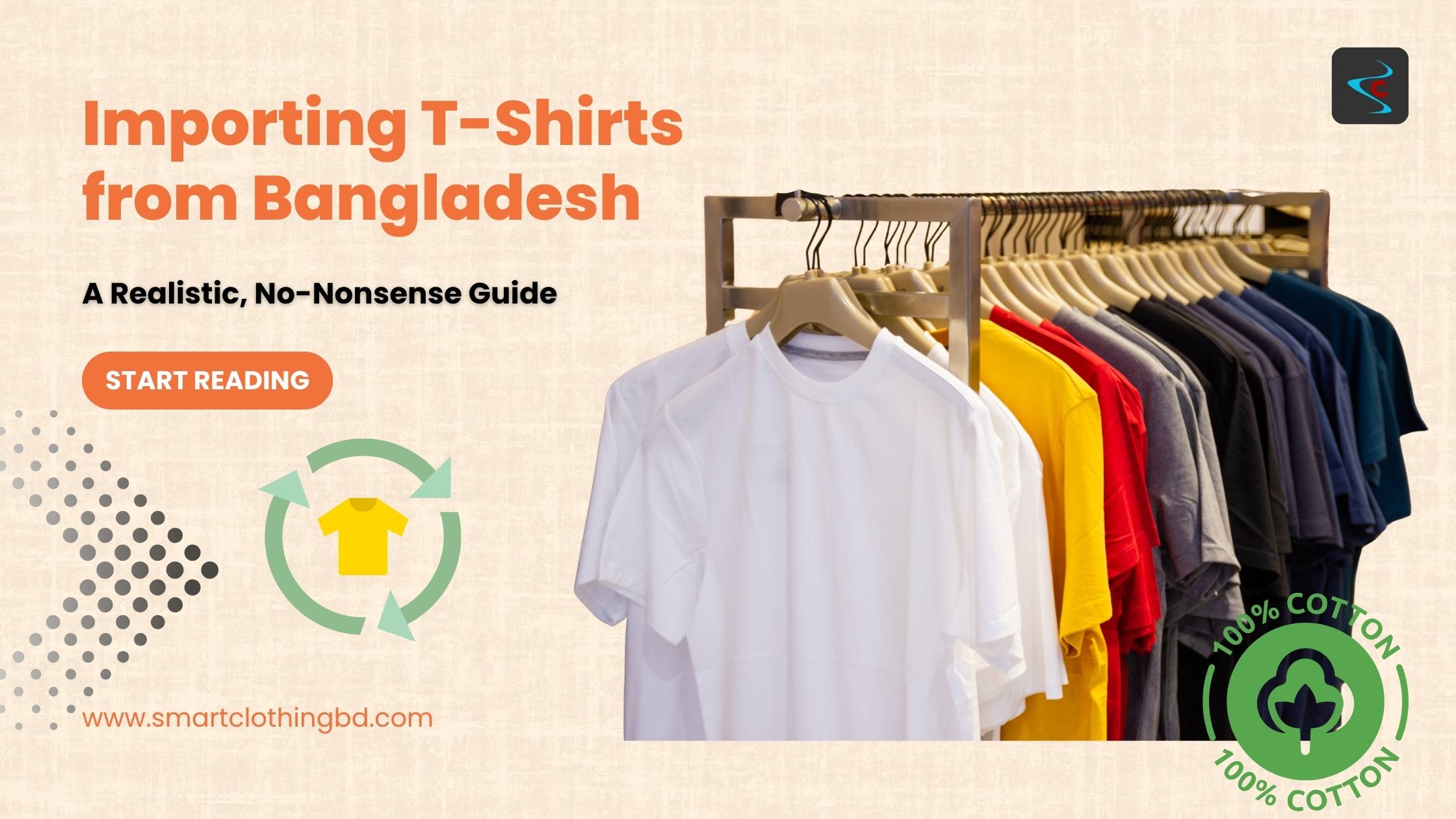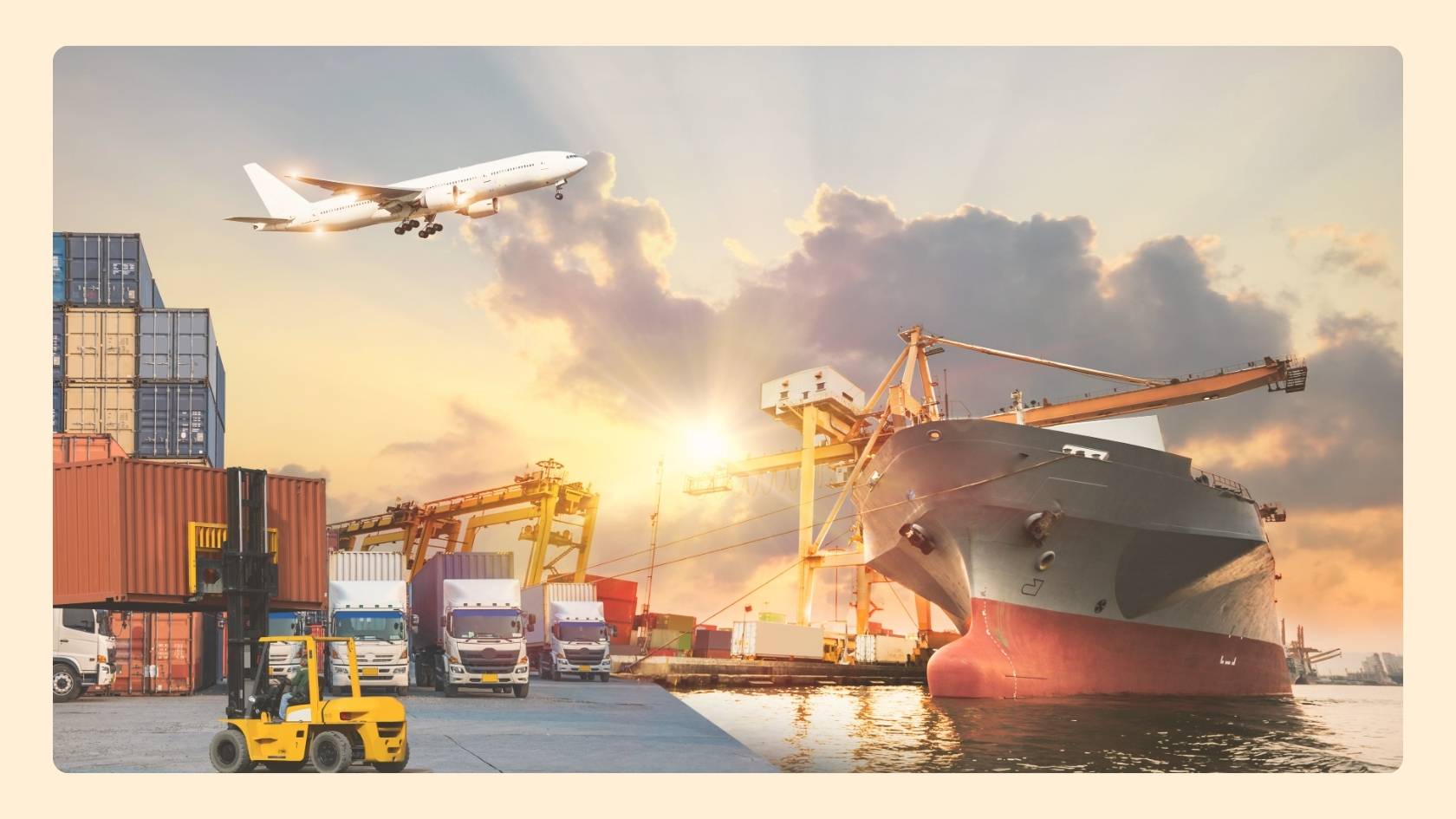
So, you’re thinking about importing T-shirts from Bangladesh. Maybe you’re starting a clothing brand. Maybe you already run one and want better margins. Or maybe you’re just tired of the overpriced suppliers you’ve been dealing with locally.
Whatever the case, you’re in the right place — Bangladesh is one of the best countries in the world for sourcing high-quality, affordable T-shirts. But let’s be real: it’s not as simple as clicking “Add to Cart” on a supplier’s website. Importing involves research, relationship-building, and a bit of paperwork. Still, once you understand the flow, it’s very doable — even for first-timers.
This guide breaks everything down — clearly and simply — so even if you’re new to importing, you’ll understand how the process works and how to make it smooth and successful.
You Need to Know What You Want — Really Know
You can’t just tell a apparel supplier, “I want T-shirts.” That’s like walking into a restaurant and saying “Bring me food.”
Bangladesh is full of options. Do you want 100% cotton or a cotton/poly blend? Lightweight 140 GSM or thicker 220 GSM? Side-seam or tubular? Plain or printed? Classic fit or streetwear oversized?
The clearer you are, the faster you’ll find a supplier who can meet your needs — and the more accurate your pricing will be.
Pro Tip: If you’re just starting out, order a few different kinds of T-shirts from your local market, note what you like about each, and use that as a reference. Trust me — it saves a lot of back-and-forth.
Finding a Supplier: It’s Not Just About Google
Yes, you can find Bangladeshi suppliers on Google, Alibaba, or LinkedIn. But don’t stop at the first website that looks legit.
Start conversations with at least 3–5 companies. Ask questions. See how fast and clearly they reply. Do they send actual photos of their products? Do they understand your needs or just push for the sale?
You don’t need a giant garment factory with a showroom. Many smaller or mid-sized manufacturers do fantastic work — and they might be more flexible on order quantities too.
Want to verify legitimacy? Check if they’re listed on the BGMEA website, or ask for their company profile with compliance info like OEKO-TEX, WRAP, or BSCI.
Samples Are Not Optional
No matter how great a clothing supplier looks online, you need to feel the fabric in your hand. A supplier may say “180 GSM 100% cotton” — but the texture, stitching, shrinkage, and actual fit can vary a lot.
If you’re importing t-shirts from Bangladesh, this step is even more important. Most suppliers will be happy to send samples. You might need to pay shipping, but it’s worth it. Some will even offer sample packs with different fabrics or colors. Be picky. This is your product.
And don’t forget to test them — wash, stretch, wear. How does the color hold? Does it twist? That’s where the real quality shows.
Pricing Isn’t Everything — Relationships Matter More
Sure, one supplier might quote $2.10 per tee, and another might say $2.25. It’s tempting to go with the cheaper one. But ask yourself:
- Who replies faster?
- Who sends clearer information?
- Who seems more flexible if you change something later?
Sometimes paying a little more gets you someone who’ll go the extra mile — and fix things if they go wrong (which, let’s be honest, can happen in production).
Also, discuss your MOQ (minimum order quantity) and see if it’s negotiable. Many garment suppliers are open to smaller runs, especially for first-time orders. Some of them have Sample FOB Price for reference.
So now, if you’re serious about importing t-shirts from Bangladesh long-term, then finding a supplier you can communicate with — clearly and consistently — is worth more than shaving off a few cents per piece.
Trial Order = Your Safety Net
Start small. Maybe 1000 or 1500 pieces. Just enough to test how the supplier handles real production, timelines, and quality. Use this as your “practice round.”
You’ll learn a lot: how well they follow instructions, how accurate the sizing is, whether packaging was done correctly. If everything goes smoothly, now you’ve got a reliable partner for your main order.
Keep Communication Active (But Respect Time Zones)
Production takes time. Don’t panic if you don’t get daily updates. But don’t disappear either.
Stay in touch weekly. Ask for updates on fabric sourcing, stitching progress, or printing. If you want to be extra sure, consider hiring a third-party inspection company like QIMA or SGS to check the goods before shipping.
Remember — showing that you care about quality often motivates the supplier to do their best work.
The Shipping Part Isn’t That Scary

Once your T-shirts are ready, the supplier will arrange shipment. You’ll hear terms like FOB, CIF, or DDP. Here’s what they mean:
- FOB (Free on Board): You handle shipping and customs after the goods are at the port.
- CIF (Cost, Insurance & Freight): The supplier handles shipping to your port, but you do customs clearance.
- DDP (Delivered Duty Paid): Easiest for beginners. The supplier (or their agent) delivers the goods to your door, handling customs and taxes.
Make sure you get the paperwork — invoice, packing list, bill of lading, certificate of origin. These are needed for customs.
When the Boxes Arrive…
The real excitement starts when the goods land at your warehouse or shop. Open them. Check random pieces. Look for size consistency, proper packaging, and correct labels.
If something’s wrong, don’t freak out — but inform your supplier immediately. Most will help find a solution. After all, they want repeat business too.
If everything’s good, take a moment to celebrate. You just pulled off an international trade deal🤝. Not everyone can say that.
Final Words: Don’t Just Import — Build a Partnership
Importing t-shirts from Bangladesh might seem overwhelming at first, but with the right approach and reliable sourcing partners, it can become a smart long-term strategy for your brand. In the end, the most successful importers aren’t the ones who get the cheapest price – they’re the ones who build strong, long-term relationships with reliable suppliers.
Bangladesh’s garment industry has built trust with brands all over the world — from fast fashion giants to small indie labels. You don’t have to be a big name to work with a quality supplier. You just have to be clear, respectful, and consistent.
And now that you know the process, you’re already way ahead of most beginners.
Want to Learn More?
We’ve written a detailed beginner’s guide to importing clothes from Bangladesh — covering paperwork, shipping options, and tips to avoid common mistakes.